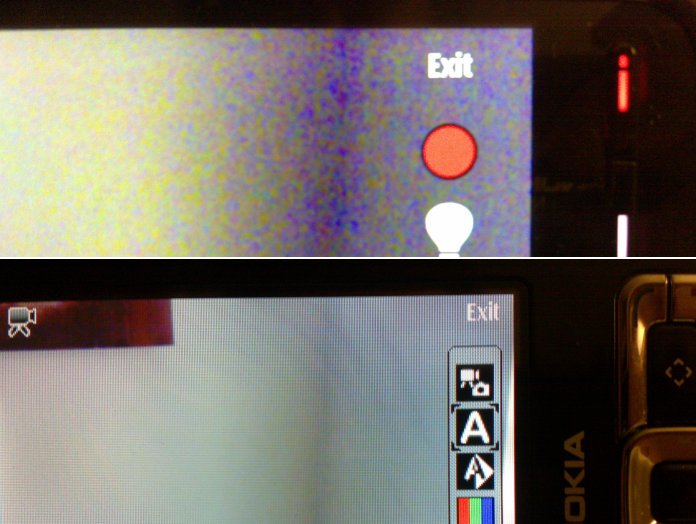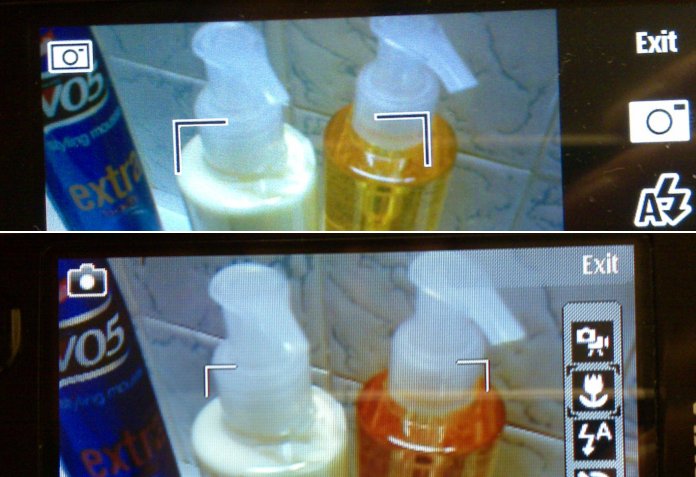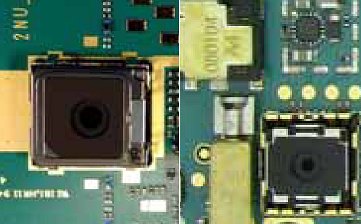The number of factors that affect the quality of a phone camera's still photos and video captures is rather large, it seems:
- Presence of protective glass, plus whether or not this can get scratched
- Quality of glass or plastic lens
- Size of the lens/aperture
- Presence or absence of extra optical elements (e.g. zoom)
- Size, resolution and quality of the CMOS sensor
- Quality of the processing algorithms in both the camera firmware and phone firmware
That's quite a cocktail to bear in mind when trying to compare phone cameras, as you'll have gathered over the previous nine (count 'em) parts in this article series. Although I've covered resolution before (in the 'Megapixel myth'), huge differences due to aperture and sensor size in recent devices make this an area that simply has to be talked about too.
Take the Nokia 5800 XpressMusic, for example. As you'll have seen from my review, the results from its camera in well lit situations (sunlight, LED flash at optimum distance) can be excellent. Unfortunately, results in all other conditions, especially indoors, are pretty bad, with huge amounts of digital noise showing up on both the viewfinder and in the final photos and video:

A dramatic difference. Pointing the 5800 XpressMusic and N95 8GB in video capture mode into a room corner in average indoor lighting...
In identical circumstances, the Nokia N95 8GB (for example, though results from the also 3mp-equipped N93 and E90, plus the 5mp N95, N82, N96 and many other devices would have been similar) shows an order of magnitude less noise - begging the question: why is the 5800's camera so bad here? Yet again we have a situation where the quoted resolution of the camera - and indeed even the presence of name-brand optics - isn't anywhere near as important as other factors.

Another example, this time looking at the stills photo interface attempting a (fairly well lit) indoor lighting shot. Look at the blue-ish digital noise on the 5800's attempt at gathering light from the left-hand bottle's pure white top...
But let's look at the physical attributes of the two devices compared above. On paper, 3 megapixels with Carl Zeiss optics sounds decent and should produce results that aren't a million miles from the similar 5mp camera in the N95.
In practice, the 5800 camera's aperture is around half the diameter of the N95 camera's, so we've instantly got a factor of roughly four in terms of light gathering potential. Other components inside the cameras will be (approximately) scaled in turn, with smaller distance from lens to CMOS sensor and with a smaller sensor area (an industry source has suggested the 5800 XpressMusic's camera is using a 2.4mm by 1.8mm sensor ("1/6"), while the N95's camera is using a 4.8mm by 3.6mm sensor ("1/3"), again introducing a potential factor of four in terms of light detection.
Things are obviously not as easy as multiplying four by four, plus there are other factors to take into account, including the slightly smaller size of each sensor pixel in the higher resolution camera, but you can easily see how the amount of light gathered per sensor pixel is significantly less in the case of the smaller camera in the 5800 XpressMusic.
We're talking a couple of micrometres for each sensor pixel, by the way, quite staggeringly small. At this level, noise is a result of there simply not being enough photons of light hitting each sensor pixel in the allotted shutter time. Yep, we're effectively touching on quantum physics. In good light conditions, there's no significant effect, since there are plenty of photons to go around, even on smaller apertures and sensors, but in poorer light conditions, the bigger, better camera in the likes of the N95 can integrate the reception of far more photons per pixel and produce more accurate, less noisy results.

To scale, the camera modules on the circuit boards of (left) the Nokia N95 8GB and (right) the 5800 XpressMusic - sometimes size is everything!
It's worth noting that I'm not picking on the 5800 XpressMusic here - the same comparisons are valid for any other camera-toting phone. To paraphrase a conclusion from earlier in this article series:
It's not just about megapixels - quality is also heavily dependent on optics, aperture size, sensor size and quality
Remember that, next time you pore over a phone spec sheet or read someone's rushed hardware review....!
Steve Litchfield, All About Symbian, 30 Dec 2008
